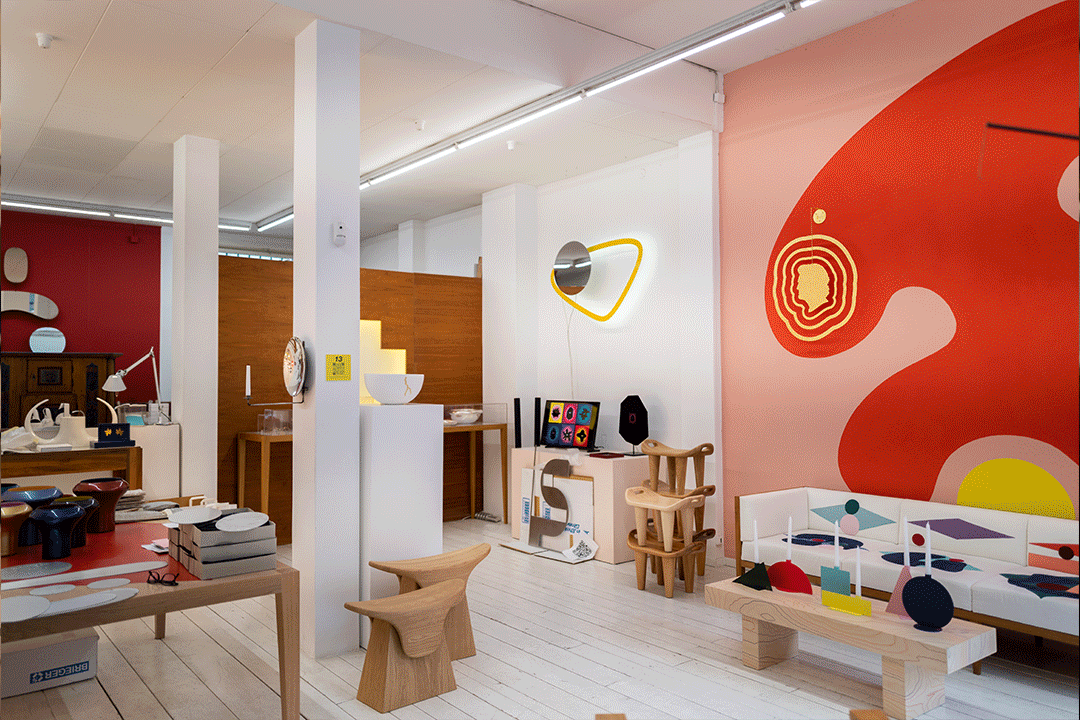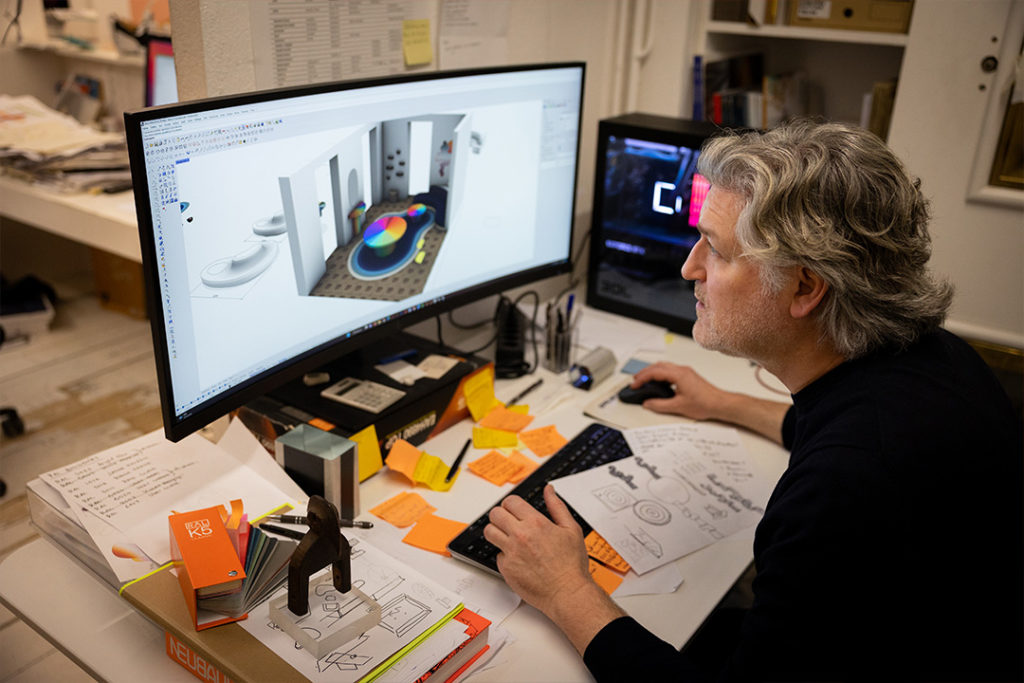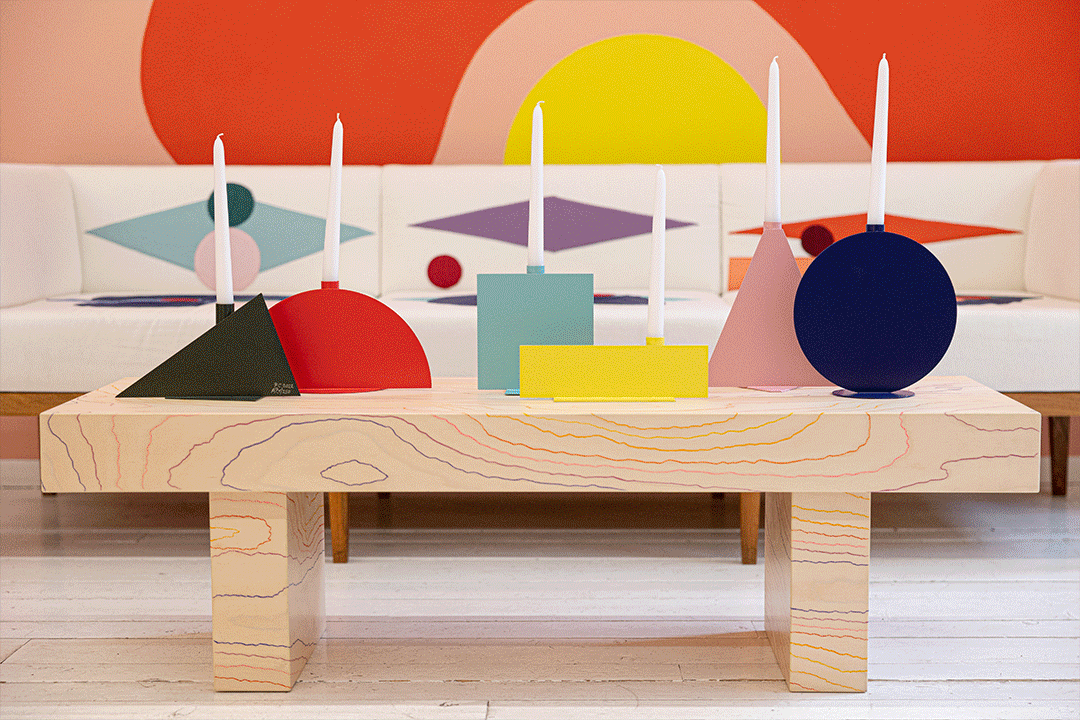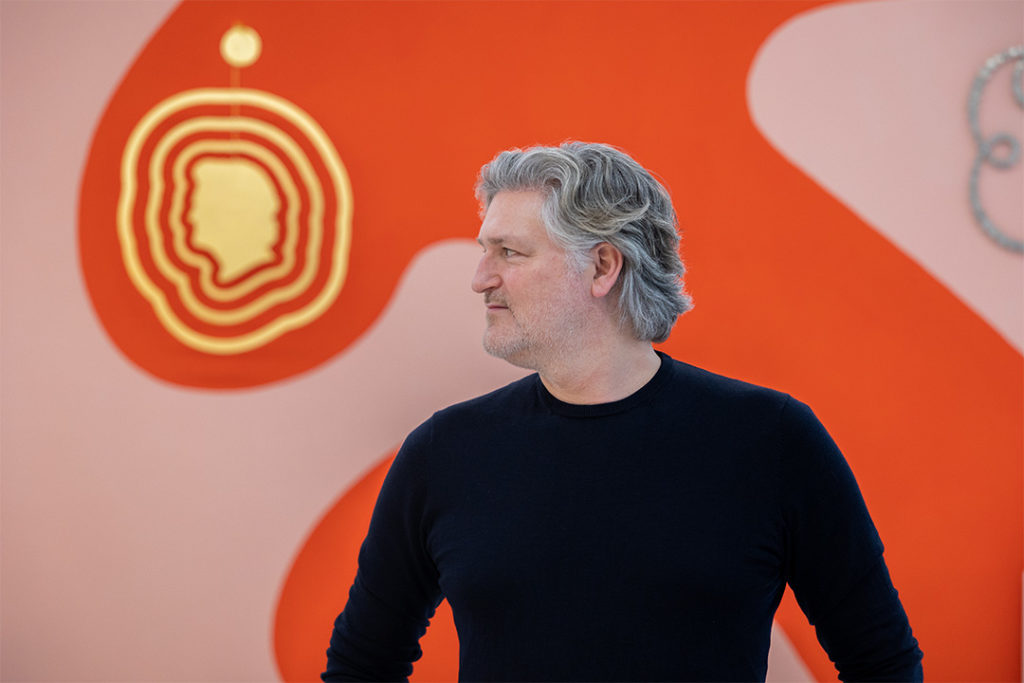Located in the Bains district of Geneva, Philippe Cramer’s studio and showroom is representative of the multifaceted creativity of its founder, who is an artist, designer and self-publisher. A true laboratory of experimentation, it brings together different manufacturing processes and materials, such as wood, metal, porcelain and digital. Originally from Geneva, it is this attachment to his native city that led the artist to found his studio Cramer + Cramer in 2001. The format was initially family based since one of the Cramers is his mother’s. Two years later, the gallery moved to the rue de la Muse to remain there.
But before settling permanently in Switzerland, Philippe Cramer was confronted with European historical movements during his studies at the London-based Sotheby’s Institute of Art, then with American creative trends during his Bachelor’s degree in Fine Arts at Parson’s School of Design in New York, and finally with artistic influences from around the world, both during his exhibitions and during his personal research. That said, he now makes it a point of honor to produce most of his pieces locally, regularly working with some twenty artisans in the Geneva region.
Meeting with Philippe Cramer at the famous address of the rue de la Muse.

NOW – You have lived in New York, London, Paris and Geneva, how does the vision and perception of design differ?
Philippe Cramer : The schools of thought are different between the two continents, and even within Europe. Finally, each country has its own way of approaching and conceiving design. For example, France is very impregnated with decorative arts, the Italians are very close to manufacturing processes with both mechanical and intellectual sides, while the Dutch and the Flemish are more conceptual, the aesthetics remaining really very secondary. And these disparities are exciting! On the other side of the Atlantic, there was a real craze for design in the 50s with George Nelson or Charles Eames, which has since evaporated. That said, things have picked up in recent years. More globally, we are returning to small structures with handmade production, rather than large productions, as in the era of Philippe Starck for example.
Through these moves and different trends, has your work followed any influences?
Absolutely, between these changes of country and stages of life, I am in perpetual evolution. I think that artists are like sponges of the environment that surrounds them. We have little antennae that receive information to bring it out in a direct or unconscious way. Thus, creation responds to the evolution of the world, society and civilization. I feel the need to constantly enrich my vocabulary, to understand how things are made and to see new materials. It is this inquisitive nature that drives me to constantly move from furniture to jewelry and from porcelain to NFT! I’m amazed by artists who do the same blue line for their entire career, but I’m definitely not one of them. My work is also influenced by the encounters I have with artisans. For example, I decided to do gold thread embroidery when I met this master artist in France who specializes in this very special technique.

At what stage of your artistic evolution are you now?
I’m in a very interesting phase, looking at both the old and the future! On the one hand, I have always been very close to handicrafts, handmade, and traditional manufacturing techniques, which unfortunately tend to get lost. In this sense, I am currently buying antique furniture from the Bernese Oberland dating from the 18th and 19th centuries to transform it. This research will be presented in my next exhibition in February in Gstaad. On the other hand and in parallel, I am preparing something completely turned towards the future. During Art Genève 2022, I presented a collection of NFT works, non-fungible token. In this continuity, I have just created a gallery in the metaverse in which it is possible to walk around with your avatar, see some of my creations that do not exist in physical form and acquire them to furnish and decorate your own virtual space. It’s really the opposite of my previous work, but I’m convinced that the art world will turn to this digital evolution!
Speaking of digital. You decided to give the buyer the choice to buy the NFT work or to transform it into a physical piece, destroying the virtual version. Why did you do this?
I wanted to offer this possibility because I was creating the digital works for the first time to finally present them to an audience that is used to physical and tangible works. My buyers are local collectors who are about my age and not necessarily familiar with the world of new technologies. The Burn and Swap, in jargon, gave them the opportunity to return to something more common and usual for free. More concretely, the NFT works represent black apotropaic amulets on colored backgrounds in GIF format, while their physical counterpart is a work similar in form, but in beaten blackened metal. So there is this visual link between the image that moves and the small picture to hang on the wall. For the little anecdote, before each acquisition I explained this possibility of doing the Burn and Swap to reassure the buyers, but surprisingly, until now, none of the fifty has come back to me to do this exchange!
And what use do they make of it?
After the acquisition, I accompanied some buyers in the creation of their own digital wallet and thus could transfer the coin to them. Others prefer to keep it in my master wallet by sending them only the GIF. Then, it is possible to watch the works on a phone screen, to project them on a wall or to use a special ultra thin frame, which allows you to loop your NFT collection.
In your various interviews, you position yourself as a designer, rather than an artist, emphasizing the usefulness of your works. Has your approach changed since the NFT?
I don’t like categorization very much, even if I understand the human need to classify things. When I introduce myself, I define myself as a designer and artist because I want to get around this very sacralized side of art. I like the idea of designing pieces that are both artistic and utilitarian, that you can touch to make them your own. So I straddle both! For example, my latest collection of candle holders for Christmas is called “functional sculptures”, which illustrates this duality perfectly!

A few years ago, you defined your style as “sensual minimalist”. Is it still the case?
I think so, although I’ve become a little more maximalist now. I like materials that make you want to touch them and soft, pure and sometimes geometric shapes. Finally, my inspiration comes from the beauty of nature and the ancient world that I particularly like.
To create your ideas, you work with about twenty craftsmen, jewelers, cabinetmakers, etc. How does this collaboration work?
In my creative process, I often start with fairly free pencil drawings on paper, then I add color. It is finally a very traditional artistic process. Little by little, the work takes shape, I then transpose it on a computer with a 3D program. The piece is thus defined with the dimensions, calculated to the millimeter, and the manufacturing plans. So when I call on the craftsman, I already have a precise idea of the object because I am used to working with them. That said, sometimes they advise me or specify the possibilities of the material in question. Then, the manufacturing is entirely based on the talent of the craftsman and the absolute mastery of his tools. They are incredible people, who must absolutely be highlighted! Moreover, I am currently preparing my participation in the Doppia Firma exhibition, organized by the Michelangelo Foundation, whose goal is to give visibility to exceptional craftsmen by making a double signature of the work. It is a true marriage between a designer and a craftsman!

What are the three works or collections that have marked your career?
First of all, the Randogne, these colored lamps made of cut and powder coated metal with the particularity of having a bulb that goes through the disk, which gives the illusion of a solar eclipse. They have been used a lot in the press. Since I am self-publishing, I need flagship pieces, which allow me to finance my future experiments and new prototypes that may never see the light of day. Next, the Olé stools, which are directly related to my meeting with my first cabinetmaker. The carved wooden pieces are complex to realize and require a lot of time and know-how. Finally, I would talk about a collection being created for Art Genève 2023, which marks a new stage in my career. I am currently working on mixed reality sculptures, in other words a digital addition to the real physical world. More concretely, it is a base with a QR code, which allows the sculpture to be displayed using a phone. And to give a little scoop, the buyer of the digital work will also receive a special file to print the sculpture in 3D. So, if he wants to have the physical piece, he will be able to choose its size and color, thus participating in the creation of the final work.

Website : https://philippecramer.com/
Instagram: @philippecramerswitzerland
